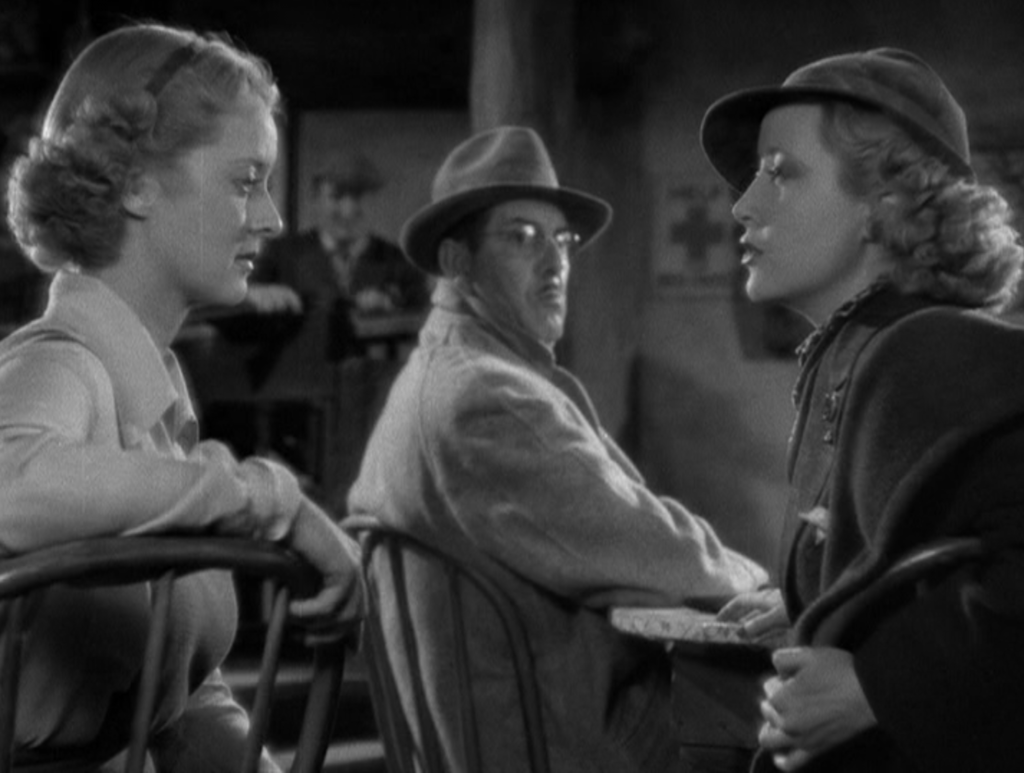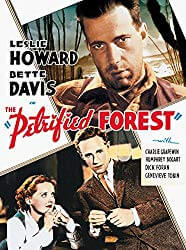The Petrified Forest (1936)
0
I really enjoyed watching this film and looked forward to some scholarly insights on the commentary track by Eric Lax, co-author of a Humphrey Bogart biography and several other books. His commentary consisted mainly of biographical information of almost the entire cast and crew with very little about the film itself. Not that I didn’t find it interesting that Bogart and Leslie Howard were reprising their roles from the Broadway production of the play by Robert E. Sherwood and that Warner Bros. wanted to cast Edward G. Robinson rather than Bogart but Howard, who owned part of the film rights insisted Bogart get the part. Or that this was a make or break moment in Bogart’s career and that the desperation he had been feeling in his own life fueled his portrayal of the desperate character he played in the film. When I finished listening to the commentary, however, I’d pretty much forgotten what I thought was so great about the film. So I watched it again and will now attempt to point out a few of the film’s merits other than its cast and crew. But first I would like to comment on the cast, specifically Howard, Bette Davis, and Bogart.
Howard and Davis were top billed. They had last appeared together in Of Human Bondage (1934) which was a breakout role for Davis. By the time production began on The Petrified Forest, Howard was at the pinnacle of his career and Davis was well on her way to becoming the queen of Warner Bros. and Hollywood. Bogart upstaged both of them as Duke Mantee, a gangster modeled after John Dillinger, whom Bogart resembled somewhat, and whose mannerisms he studied and mimicked. I must confess that Bogart is my all time favorite actor so I’m biased but he simply had the meatiest role in the film and he imbued it with such a savage intensity that he was able to turn a rather philosophical play into gripping cinema. Howard’s character, Alan Squier, is a failed writer, wandering aimlessly across America, waxing poetically about how Nature is “taking the world away from the intellectuals and giving it back to the apes” and his own useless existence. His sacrifice doesn’t come off as heroic but merely foolish and unnecessary. The role of Gabrielle, played by Davis, is hardly one she could sink her teeth into. She’s a sweet naive young girl working as a waitress in a gas station/cafe in the middle of the Arizona desert. She dreams of traveling to France to develop her artistic abilities as a painter.
The real star of the show, however, is the writing. One can usually distinguish when a film is based on a play by the quality of the dialogue and this one is no exception. And there’s plenty of humor, much of it centering on the character of Gramp Maple (Charley Grapewin), the owner of the cafe, who’s excited that a notorious killer has taken him, his family, and patrons hostage and is eager to see someone get killed. Then there’s the unhappily married couple, Mr. and Mrs. Chisholm (Paul Harvey and Genevieve Tobin). After Alan declares: “Any woman’s worth anything a man has to give. Anguish, ecstasy, fate, jealousy, love, hatred, life or death. Don’t you see that’s the whole excuse for our existence. It’s what makes the whole thing possible and tolerable”, Mrs. Chisholm asks her husband, “Did you hear that?” to which he wearily replies, “Yes, I heard.” It’s notable that they are the only couple in the film. We learn that Mrs. Chisholm, on the insistence of her parents, gave up a chance to become an actress to get married. Director Archie Mayo utilizes a cinematic device here as Mrs. Chisholm tells her story to Gabrielle. Note how the women’s profiles create a frame around Mr. Chisholm in the background as she urges Gabrielle to pursue her dreams rather than getting married.

“I know what it means to repress yourself and starve yourself…”
Just a few minutes later, Gabrielle’s and Alan’s profiles frame Mrs. Chisholm in the background as Gabrielle envisions how happy they could be together in France. The viewer is reminded that this willingness to form a relationship is what led to Mrs. Chisholm’s imprisonment and unhappy fate.

“I think we’d be terribly happy together.”
The film also has two black characters, John Alexander as Joseph, the Chisholm’s subservient chauffeur, and Slim Thompson as Slim, part of Duke’s gang. The exchanges between these two characters are quite remarkable for 1936 and add another dimension to the story.
Perhaps those of us who prefer good writing to action films with comic book heroes and CGI are, like Alan Squier, a dying breed. Nature may be “taking the world away from the intellectuals and giving it back to the apes” but not soon enough for either to survive.

